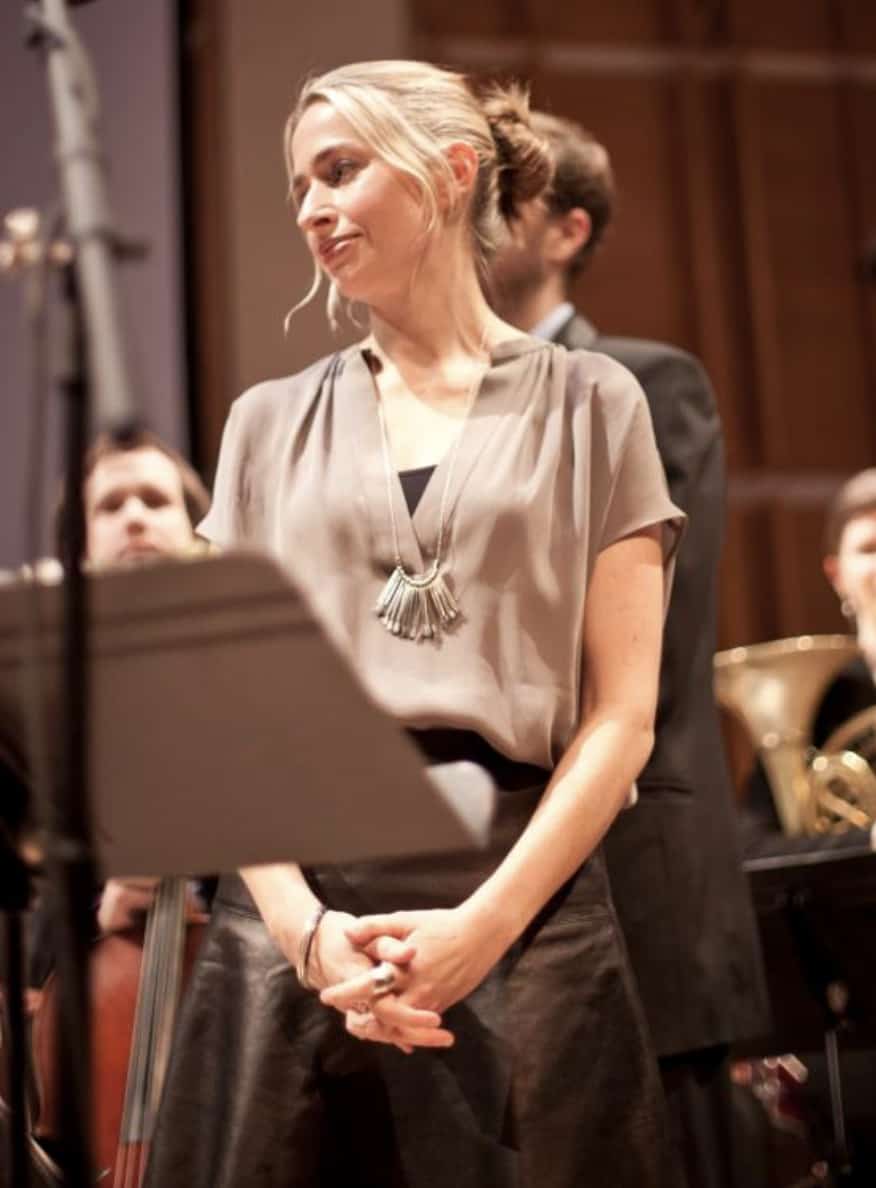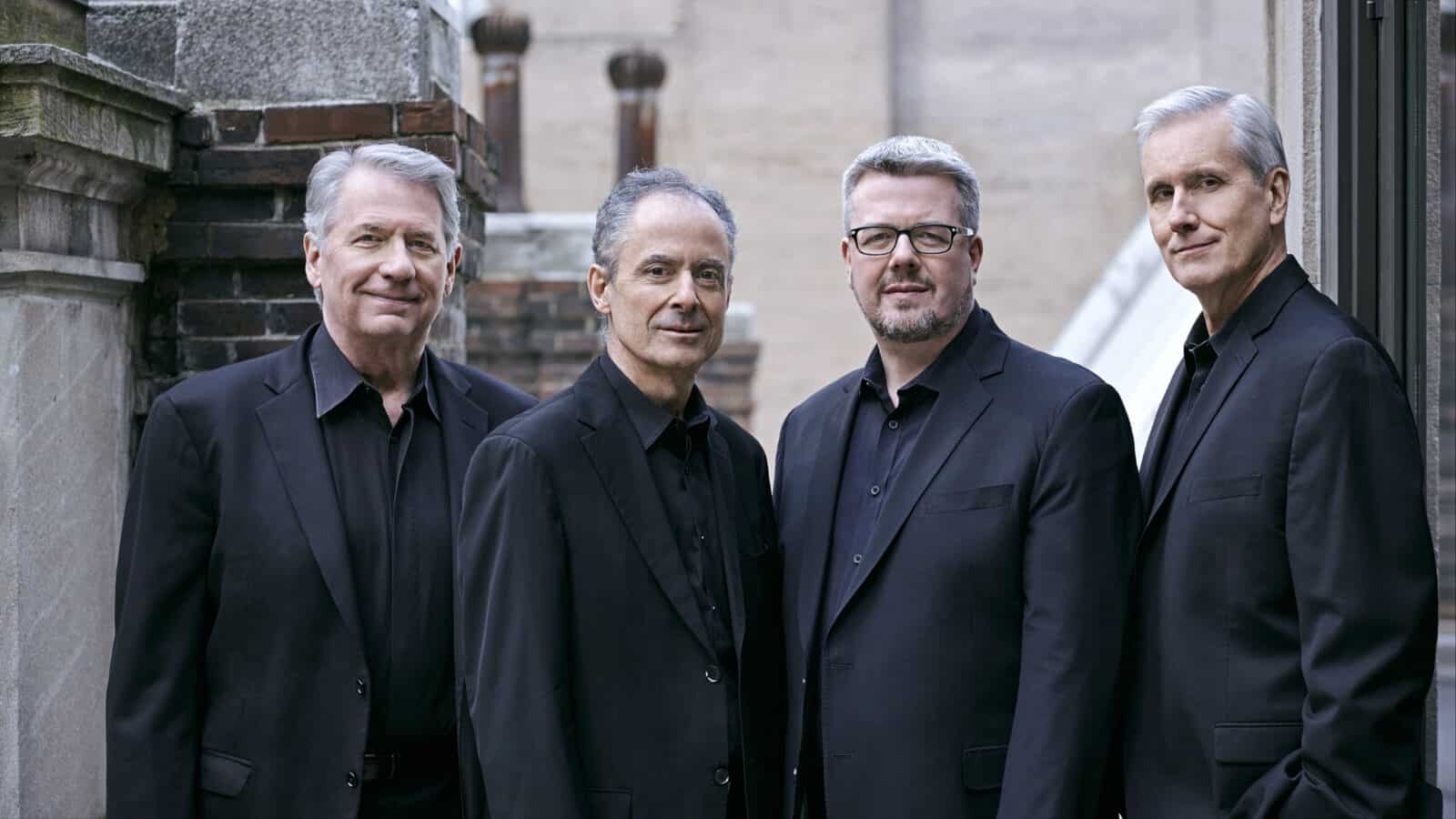Deep tension like a held breath. Voices move independently in protest, terse and grim, high and agitated — cello, viola, two violins. Dmitri Shostakovich wrenches with the drive to create with integrity under censorship in 1968, in the U.S.S.R.
The internationally acclaimed Emerson String Quartet are turning to a composer they have explored in many dimensions, as they come to Tanglewood — in one of their last performances. They have announced a natural retirement for the group at the end of this season, after more than 40 years of music.
Through generations of international acclaim, the quartet has traveled the globe, recording more than 30 albums and earning nine Grammys. Three of the four are founding members — Eugene Drucker on violin, Lawrence Dutton on viola and Philip Setzer on cello have played together since 1976, and Paul Watkins joined them on violin in 2013.
‘Almost all of Shostakovich’s quartets have a very visceral impact on audiences. It was partly the agony of the situation that he found himself in, as a creative artist in the Soviet Union at a time of censorship.’ — Eugene Drucker, violin
They have played Tanglewood regularly since the annual Contemporary Music Festival in 1981, said Eugene Drucker, speaking as the group prepared the next stop on their summer tour. (He and his wife now live part of the time just over the ridge from the Berkshires in New York State.)
On June 28 in Ozawa Hall, the quartet will perform Shostakovich’s String Quartet No. 12 in D-flat — alongside Antonin Dvořák’s piano quintet in A, with virtuoso pianist Emmanuel Ax, celebrating a traditional Ukranian dance and music.
And they will round out the summer night with Henry Purcell’s Chacony in G minor and a contemporary work, Sarah Kirkland Snider’s Drink the Wild Ayre (2023), a Boston Symphony Orchestra co-commission.

Internationally recognized composer Sarah Kirkland Snider stands in profile in a field in the sun. Press photo courtesy of the artist.
It makes sense to perform new work here, Drucker said, because Tanglewood is a center for contemporary music — he has felt that pulse since he came here as a music student, though he feels contemporary composition has changed since those summers when he was 16 or 18 years old.
In those days, he said, dissonance reigned, and melody unfolded in angular fragments. Many Western classical composers avoided even allusions to tonality — music written in a recognizable key. Today, the pendulum has swung back, he said, opening to a broader palette of sound, and to fusions between classical and traditional, folk and popular music.
Shostakovich — ahead in the USSR
When the Emerson String Quartet first came together, Shostakovich’s Quartet No. 12 was a contemporary work, and in a way he can transition between the two poles, Drucker said. The piece has a definable keynote and a sense of harmony, and yet he holds violent clashes in the music and ends in a rising current of sound.
“Almost all of Shostakovich’s quartets have a very visceral impact on audiences,” he said. “It was partly the agony of the situation that he found himself in, as a creative artist in the Soviet Union at a time of a great deal of censorship, of artistic activity, and a sense of danger … He actually felt that his life was in danger.”
‘Shostakovich had to be very careful in the decades that followed, and he often composed with irony in his music.’
Shostakovich’s early opera, ‘Lady Macbeth of the Mtsensk District,’ opened to enormous success across the Soviet Union and in Europe and the United States, Drucker said — and then a brutal review appeared in Pravda (the ‘official newspaper’ of the Russian Communist party), which some people thought that Stalin himself had written, condemning the music for its dissonance and radical energy.
“So Shostakovich had to be very careful in the decades that followed,” Drucker said, “and he often composed with irony in his music.”

Internationally acclaimed pianist Emanuel Ax stands in golden light from tall windows. Press photo courtesy of Tanglewood
He still found potential for the kind of dissonance that he wanted, and he found a way of steering clear of the authorities. But in the late 1940s, after World War II, he found himself in danger again. And he called some of his later works tombstones for the people who died under Stalin.
Dvořák lifts voices from the Ukraine
In contrast, Drucker said, the Dvořák piano quintet shifts from fast, climactic moments into generous melodies and sad, slow movements patterned on a Dumka, a traditional form of Ukrainian folk music.
“This is one of the three great iconic piano quintets,” he said, “… and it always has a big impact on audiences. Playing with Emmanuel Axe is a great pleasure for us. He’s a beautiful, lyrical pianist.”
‘This is one of the three great iconic piano quintets.’
The piano ripples as a low string voice rocks in sustained tones. Dvořák roots his composition in the folk music of Czech lands, Drucker said, and the Dumka comes from just across the border, in the western part of Ukraine. Dumka means thought, and the folk ballads could move quickly from high energy to sadness.
(Dvořák wrote the work honoring his homeland in a shifting time, Drucker said, in the summer and fall of 1887 — what is now the Czech republic was then a Bohemian body within the Holy Roman Empire, holding onto their own culture in a struggle with Germany and Austria that would intensify into World War I.)
“I’m not saying Dvorak was trying to rebel through his music,” Drucker said, “but he was simply trying to use this wonderful source of folk music … He was saying, ‘You have this great potential material to use. Just immerse yourselves in it.”
Sarah Kirknald Snider weaves polyphony
In the realm of immersion, lyric agility and independence, the Emerson String Quartet have reached out to Sarah Kirkland Snider to compose the last commission of their career — they admire her understanding of the strings as individual voices, Drucker said.
In tribute to the group, she has turned to a line from the transcendentalist essayist and poet who gives them their name, Ralph Waldo Emerson: ‘Live in the sunshine, swim the sea, drink the wild air’s salubrity …’

Sarah Kirkland Snider, known around the world for her music, stands surrounded by an orchestra about to perform. Press photo courtesy of the artist.
Snider creates music for international performers on both sides of the Atlantic, across Europe and as far beyond as the Sydney Opera House, winning international praise from The Washington Post and NPR to BBC Music Magazine — Berkshire listeners may know her work from Roomful of Teeth and Bang on a Can.
‘… the questing spirit, sense of adventure and full-hearted passion with which the Emerson has thrown itself into everything it has done …’ — Sarak Kirkland Snider
She also has world premieres this year for soprano Renée Fleming and baritone Will Liverman, and with the Decoda Ensemble at Carnegie Hall — and she and the Emerson String Quartet have premiered this new work at the Lincoln Center in May. Among many projects, she is now working on an opera about 12th-century visionary and polymath St. Hildegard von Bingen.
Snider often composes in modal and melodic and harmonic language, Drucker says, and at the same time she will layer instruments, each going their own way. All four voices may move independently, or weave through each other like a fugue, polyphonic, or come together cordially in chorus.
“… That’s certainly the thing that interests us, I think the most,” he said, “if we had to choose one factor in our whole literature of string quartets from Haydn on — the constant malleability of the textures.”
In her own words, Snider transforms breathing air into a song-like form with a lilting, asymmetrical rhythms, and she raises them in a toast to “the questing spirit, sense of adventure and full-hearted passion with which the Emerson has thrown itself into everything it has done for the past 47 years.
“Here’s to the singular magic of these artistic giants,” she says, “and the new adventures that await them.”

